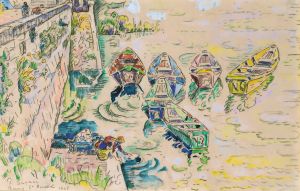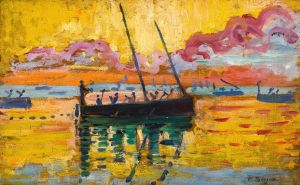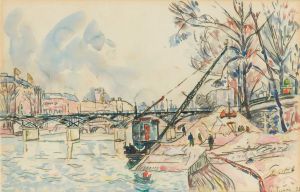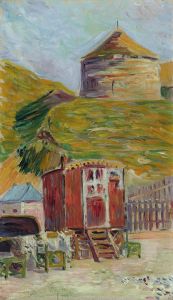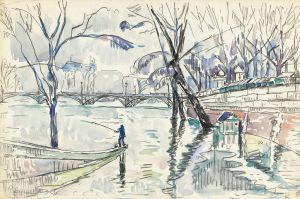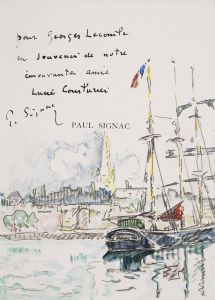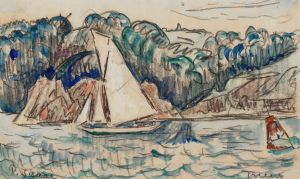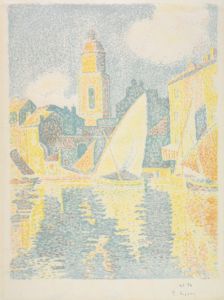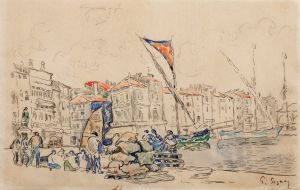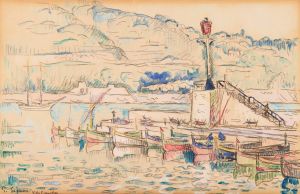
Etude de ciel
A hand-painted replica of Paul Signac’s masterpiece Etude de ciel, meticulously crafted by professional artists to capture the true essence of the original. Each piece is created with museum-quality canvas and rare mineral pigments, carefully painted by experienced artists with delicate brushstrokes and rich, layered colors to perfectly recreate the texture of the original artwork. Unlike machine-printed reproductions, this hand-painted version brings the painting to life, infused with the artist’s emotions and skill in every stroke. Whether for personal collection or home decoration, it instantly elevates the artistic atmosphere of any space.
Paul Signac's "Etude de ciel" (Study of the Sky) is a notable work by the French Neo-Impressionist painter, who was a significant figure in the development of the Pointillist technique. Born in Paris in 1863, Signac initially trained as an architect before turning to painting. He was heavily influenced by the works of Georges Seurat, with whom he developed the Pointillist style, characterized by the use of small, distinct dots of color applied in patterns to form an image.
"Etude de ciel" is a study that exemplifies Signac's fascination with the effects of light and color in the natural world. The painting focuses on the sky, capturing its various hues and the subtle transitions between them. This work is a testament to Signac's meticulous technique and his dedication to capturing the transient beauty of nature.
Signac's approach to painting was deeply rooted in scientific theories of color and perception. He believed that colors could be mixed optically rather than on the palette, a principle that is evident in "Etude de ciel." By placing tiny dots of pure color next to each other, Signac allowed the viewer's eye to blend them, creating a luminous and vibrant effect. This method not only enhanced the visual impact of his work but also allowed for a greater range of color and light.
"Etude de ciel" reflects Signac's interest in the interplay between light and atmosphere. The painting captures the sky at a particular moment, with its shifting colors and the delicate balance between light and shadow. This focus on the ephemeral qualities of the sky is a recurring theme in Signac's work, as he sought to convey the ever-changing nature of the world around him.
Throughout his career, Signac traveled extensively, drawing inspiration from the various landscapes and seascapes he encountered. His travels along the French coast, as well as his visits to Italy and the Netherlands, provided him with a wealth of material for his studies of light and color. "Etude de ciel" is likely influenced by these experiences, as it demonstrates his keen observation and his ability to translate the subtleties of the natural world onto canvas.
Signac's contributions to the Neo-Impressionist movement were significant, and his works, including "Etude de ciel," continue to be celebrated for their innovative use of color and technique. His dedication to the principles of Pointillism and his exploration of the effects of light have left a lasting impact on the art world.
In summary, "Etude de ciel" by Paul Signac is a remarkable example of the artist's skill and his commitment to capturing the beauty of the natural world through the Pointillist technique. The painting's focus on the sky and its use of color to convey light and atmosphere make it a significant work in Signac's oeuvre and a testament to his contributions to the Neo-Impressionist movement.





